
Best Xinzheng Hotels
Enter your dates for prices and availability of the best hotels in Xinzheng.
Swipe up to view more
Filter by:
Hotel Star Rating
≤2345
Popular Filters
9+8+7+6+802 Best Hotels to Stay in Xinzheng
Select your travel dates for best hotels in Xinzheng, featured by Trip.com based on guests reviews!
Most Booked
Lowest Price
Closest to Downtown
Highest Rated
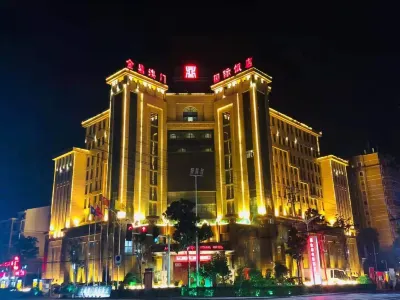


Hotel near Xinzheng Airport Area,Xinzheng 1.2% of visitors choose this area
GGuest User 2024.08.04
The hotel is still very good, and the breakfast is quite rich. The room rate with breakfast is quite suitable. I will choose it next time.
30 reviews
7.1/10
Price from
AED 114
per night
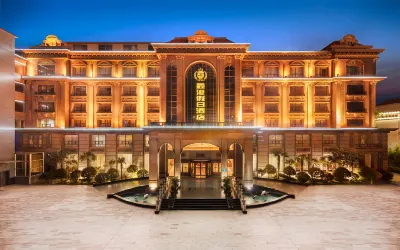


Hotel near Xinzheng Airport Area,Xinzheng 1.2% of visitors choose this area
GGuest User 2024.03.04
Very conveniently located two minutes drive from Zhengzhou Xinzheng airport, with a free shuttle service to the terminal. The front desk staff are very friendly, caring and polite, and they complete the registration formalities for foreign guests quickly and efficiently. The room was clean and quiet, and the hotel is nicely decorated and well looked after. A good option if you have an early or late flight from the airport, but also a good base if you want to visit Henan for a few days, as Xinzheng has excellent links to the rest of the province.
Very Good
428 reviews
9.3/10
Price from
AED 103
per night
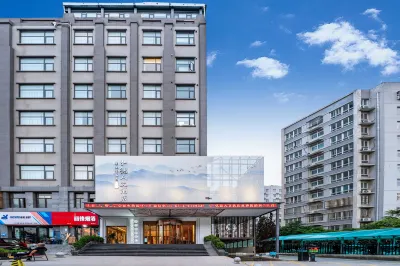
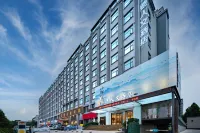
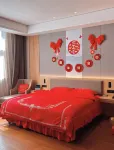
Hotel near Xinzheng
GGuest User 2024.03.03
Here, it is not just a temporary stay for one night, but also a touch of the soul. The room decoration is simple and elegant, and the service staff is warm and considerate, as if they can see through the needs of the guests. In terms of hygiene, we pay attention to absolute cleanliness, because there is a school next to the hotel, which is in sharp contrast to the hustle and bustle of the city. The silence and cleanliness are the warmest memories of this trip.
Very Good
523 reviews
9.3/10
Price from
AED 100
per night

You Might Like
Xinzheng Hotels With BreakfastXinzheng Hotels With Twin RoomXinzheng Hotels With 1 Double BedXinzheng Hotels With Swimming PoolXinzheng Hotels With Free Cancellation

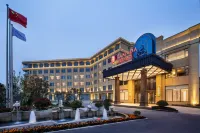
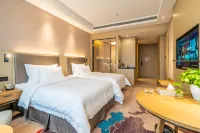
Hotel near Xinzheng
GGuest User 2025.01.26
Especially good, unexpected price/performance ratio. A big local hotel, the room is oversized, the health is good, the layout is warm, and the young lady is enthusiastic. There is a Chinese restaurant on the second floor. The popularity is very strong and there is no seat. It is recommended to a nearby Henan restaurant. Also sent small snacks, there is a nightingale at nine o'clock, there is porridge and fruit. In short, satisfied.
Excellent
736 reviews
9.7/10
Price from
AED 97
per night
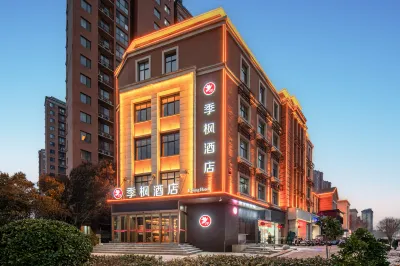

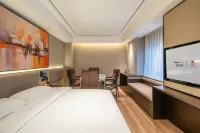
Hotel near Xinzheng Airport Area,Xinzheng 1.2% of visitors choose this area
QQintianSunning 2024.10.26
The overall feeling is very good. In the various miscellaneous hotels in Liangzhu near Zhengzhou Airport, Licheng Group is selected, and the service quality is guaranteed. The transfer was very late that night. I called the front desk and wanted to rest for a few more hours. The young lady was very good and helped to delay... The various places in the room were clean and hygienic. I took pictures in the corner. There was no dirty, soundproofing was good, and I slept very quietly! Intelligent voice control, charging cable, makeup mirror, toilet is also warm... The master of the pick-up and drop-off machine is very good, take the initiative to help with luggage, give people a very friendly feeling... The towel smells, there is a sterilized smell... If you mind, the hotel also has disposable towels, I think really thoughtful! Check out the next day, the little brother at the front desk was also very good, and he didn't say anything late...help contact the drop-off...rarely take the initiative to write reviews, but it is really worth ~
Outstanding
361 reviews
9.4/10
Price from
AED 88
per night


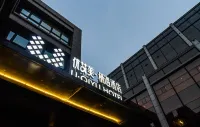
Hotel near Xinzheng Airport Area,Xinzheng 1.2% of visitors choose this area
GGuest User 2023.12.01
We arrived at Zhengzhou airport very late, midnight.. they pick us up and prepare some porridge that we can eat after we arrived at the hotel. We appreciates it!
Very Good
408 reviews
9.2/10
Price from
AED 67
per night



Hotel near Xinzheng Airport Area,Xinzheng 1.2% of visitors choose this area
GGuest User 2023.10.28
Five-star praise! ! The surrounding facilities are a bit desolate due to incomplete facilities, but everything else is pretty good. Thanks to Xiaojiao for helping us arrange airport transfers, etc. This time I brought my children to participate in a competition. The greening rate in the surrounding area is very high. There is a large Garden Expo next to it, with many natural plants and characteristic buildings from various places including pavilions, pavilions and flowing water. The hotel's buffet breakfast is also good and rich, and the staff are very enthusiastic. There is also a unique rooftop world on the sixth floor, with long corridors, small gravel paths made of polished stones, and various fruit trees and other flowers and plants. The room is large and the bathroom is spacious and bright. All in all, I am very satisfied with everything except the surrounding facilities. Hahahahahahaha
Outstanding
220 reviews
9.4/10
Price from
AED 180
per night
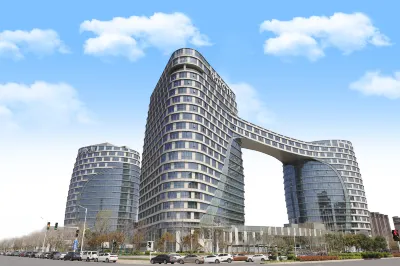


Hotel near Xinzheng Airport Area,Xinzheng 1.2% of visitors choose this area
MMezzcalico 2023.04.23
Excellent hotel for a nightcap near the airport. Room was very clean, staff was nice and very helpful in findng a way to gett o the airport. Good amenities and excellent bd
Outstanding
686 reviews
9.4/10
Price from
AED 162
per night



Hotel near Xinzheng
JJialin 2025.03.28
The service is too intimate, and it helps to print documents, it is really convenient
Excellent
885 reviews
9.7/10
Price from
AED 96
per night

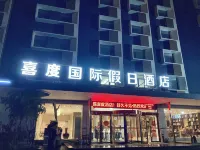

Hotel near Xinzheng Airport Area,Xinzheng 1.2% of visitors choose this area
GGuest User 2023.05.04
The service of this hotel is super good. When you get off the plane and contact the hotel to pick up the plane, they will arrive at the airport very quickly. The young lady at the front desk is warm and welcoming. The room is clean and tidy. It is more comfortable to live. The next day, there is a front desk phone notification to drop off the plane. It feels better and worth recommending.
24 reviews
8.5/10
Price from
AED 139
per night

Top 4 Premium-Hotels in Xinzheng
See all
Discover our curated selection of premium hotels in Xinzheng for your next stay

No.
1
9.4/10
2138 reviewKaifu International Hotel
Hotel near Xinzheng Airport Area, Xinzheng
"Offers pick-up/drop-offs""Close to airport"
Select dates to view prices
No.
2
9.7/10
1636 reviewXinzheng Xingangwanhua Hotel
Hotel near Xinzheng
"Friendly front desk staff""Delicious breakfast"
Select dates to view prices
No.
3
9.4/10
220 reviewvoco Zhengzhou Garden Expo
Hotel near Xinzheng Airport Area, Xinzheng
"Classy environment""Garden view"
Select dates to view prices
No.
4
9.4/10
686 reviewNovotel Hotel (Zhengzhou Airport)
Hotel near Xinzheng Airport Area, Xinzheng
"Friendly front desk staff""Offers pick-up/drop-offs"
Select dates to view pricesWhat Travelers Said About the Best Hotels in Xinzheng
See all
Browse these genuine traveler ratings and real guest reviews to find the best Xinzheng hotels.
9.6/10
Excellent
KKerinI don't even look for other hotels now I've discovered Atour. They are all over China, in excellent locations and I KNOW they will be clean and modern without leaky showers or stinky carpet or smokers in the lift. On top of this, the staff are extraordinary in an ”I got you' way. By this I mean you can feel confident they will go above and beyond to make you comfortable, for example handing me a bottle of water as soon as I arrived with loads of bags on a sweltering day, being patient with my sucky Mandarin and really trying in English. I'm an Atour customer All Day. Thanks!
Atour Hotel Zhengzhou Airport Xinzheng International Airport
Hotel near Xinzheng Airport Area, Xinzheng 1.2% of visitors choose this area
Price per night from:AED 128
9.5/10
Outstanding
GGuest UserHighly recommended when coming to Xinzheng Airport, a very cost-effective hotel.
First let me talk about the airport pick-up and drop-off, which was very timely. I arrived in five or six minutes after just one phone call. I also helped with loading luggage, which was very good. When I checked in at the hotel, the front desk kept smiling and asked me about tomorrow's itinerary. If I needed to be dropped off at the airport, I registered the drop-off time. There was also an early morning call service (30 minutes in advance). Good luck to those who wanted to sleep in. When you enter the room, it is very warm, the bathroom is very clean, and the bedding is soft and comfortable. It is worth mentioning that there is smart room throughout the room, including air conditioning, TV, curtains, lights, and smart lighting. The shampoo and shower gel are all original, and the towels and bath towels are all individually packaged. From check-in to check-out, I felt warm and comfortable in this hotel! It is very close to the airport. I recommend everyone to come and experience it! It's really good!
Luxury Smart Select Hotel (Zhengzhou Xinzheng International Airport)
Hotel near Xinzheng Airport Area, Xinzheng 1.2% of visitors choose this area
Price per night from:AED 42
9.4/10
Outstanding
AAntriksh101The hotel even provided us shuttle to the airport. Amazing and understanding staff. I would say that carry some good cash since they charge quit high security deposit.
They will return it the same way you pay. I paid through card so it came back 4 days after I returned home.
Kaifu International Hotel
Hotel near Xinzheng Airport Area, Xinzheng 1.2% of visitors choose this area
Price per night from:AED 144
9.2/10
Very Good
CClaireXimiPeople come and go, that's life. But memories will last a lifetime❣️ ( I'm a solo Traveler from the Philippines)
📍 Xinzheng, Zhengzhou
Shi Hang Hotel 世航酒店
Highly recommended if you're going to travel to Zhengzhou and looking for a place to stay. Room rates are affordable yet room amenities are superb 👌 friendly and accommodating staffs from front desk, hskp, restaurant and driver 👌
What I didn't expect?
1. Early check-in without fees (usually kasi in Pinas may fees for early check-in and late check-out. I arrived 2 hrs earlier tanong ko kaagad sa front desk if I can check-in early ang sagot Keyi👌 without additional fees
2. Airport Pickup and Drop Off for Free
3. Clean, comfy and spacious room. Ofc, very tahimik ( I didn't feel winter inside napaka warm)
4. Lahat automatic like switch, 🚽 etc (expected sa China)
5. I only paid it for only 163rmb (around 1,300 php very good deals right? Kala ko just a very normal rooms but it was beyond my expectations
6. Breakfast for only 16rmb unli buffet (around 125php sulit na sulit )
7. There's a gym inside, nearby supermarkets, near the airport and more....
I leave a thank you letter in my room upon checking out for my friend. Dunno if the hotel staff will contact the person, I just wanted to surprise him since I'm returning back to my country today.
I'll definitely comeback in Zhengzhou and will stay again at Shi Hang Hotel 👌
Shihang Hotel (Zhengzhou Xinzheng International Airport Branch)
Hotel near Xinzheng Airport Area, Xinzheng 1.2% of visitors choose this area
Price per night from:AED 69
9.2/10
Very Good
GGuest UserService was great. I really appreciate the service staff at the concierge who helped me, even after I have left the office and the country. There was a problem with my package delivery where the merchant refused to accept the return. She really went above and beyond to help!
Room was clean and I enjoyed the swing in the room! Lots of restaurants nearby and there was a spa next door, which we unfortunately didn't have the time to go to. We had dinner at the restaurant next to the hotel and the food was delicious. The free airport transfer was super convenient. Will definitely choose to stay here again!
Floral Hotel Zhengzhou Tiancheng (Zhengzhou Xinzheng International Airport)
Hotel near Xinzheng Airport Area, Xinzheng 1.2% of visitors choose this area
Price per night from:AED 75
9.1/10
JJacksonBooked one night as our flight arrived too late for our onward journey. Hotel arranged to pick us up from the 4th floor of the airport and it was quite straight forward, despite the snow storm. Hotel was very close to the airport. Hotel was clean and staff were friendly. Arrived late and left early so not much else to say except it’s a very convenient hotel for an overnight stopover if you have a late or early flight.
Zhengzhou Airport Hotel
Hotel near Xinzheng Airport Area, Xinzheng 1.2% of visitors choose this area
Price per night from:AED 114
9.1/10
HHAOHAIZIThe staff were so nice. The room is so comfortable and all of the facilities in the room were so clean and useful.
You'aimei Meijia Hotel
Hotel near Xinzheng Airport Area, Xinzheng 1.2% of visitors choose this area
Price per night from:AED 49
9.1/10
MMloveZloveXWe had a great experience! The front desk (No. 10, 11, 13) are very friendly and are easy to understand. The airport shuttle drivers (No. 15, 16) are awesome. We took the shuttle multiple times to the airport and the driver arrived on time, dropped us off on time, and he was patient. We have to drop off our grandma at the airport at midnight and back to the hotel after, we really appreciate the shuttle driver working late just to complete our trip.
Hangzheng Hotel (Zhengzhou Xinzheng International Airport Branch)
Hotel near Xinzheng Airport Area, Xinzheng 1.2% of visitors choose this area
Price per night from:AED 74
9.0/10
GGuest UserThe room was very nice and matched the pictures very well. The large wardrobe and sofa in the room are very useful. The TV can be projected and can watch many programs. I like it very much! The room is clean and tidy. The hotel staff are very kind and have a great service attitude! The location of the hotel is very good. There is a big park right outside the door and the air is very good. There are subways and buses nearby, and transportation is convenient. The stay experience is perfect, recommended to stay!
Wanjin Hotel (Zhengzhou Airport Area Shuanghe Lake Central Park)
Hotel near Xinzheng
Price per night from:AED 59
9.0/10
GGuest UserThe room is clean and tidy. The front desk and boss service are warm, attentive and thoughtful. It's worth staying.
FAQs About Xinzheng Hotels
What are the best hotels in Xinzheng?
Whether you're planning a business trip or a vacation, Xinzheng has many top-rated hotels to choose from. Floral Hotel Zhengzhou Tiancheng (Zhengzhou Xinzheng International Airport), Kaifu International Hotel and Atour Hotel Zhengzhou Airport Xinzheng International Airport are among the best choices for your stay.
How much is a hotel in Xinzheng on average?
The average price for hotels in Xinzheng is AED 81 on weekdays, and AED 84 on weekends (Friday-Saturday).
What are the best hotel deals in Xinzheng?
Find the best hotel deals and promotions on Trip.com, available year-round for both first-time and loyal users. Please check the promotions page to see what promotions are available now on Trip.com.
Which hotels in Xinzheng offer airport shuttle services?
Getting to your accommodation in Xinzheng is easy with hotels that offer airport shuttle services. Floral Hotel Zhengzhou Tiancheng (Zhengzhou Xinzheng International Airport), Kaifu International Hotel and Atour Hotel Zhengzhou Airport Xinzheng International Airport provide convenient airport shuttle services.
What are the best pet-friendly hotels in Xinzheng?
Blue Geometry Hote!Zhengzhou XinzhengInternational AirportBranch, Zhengzhou Wanguizhou Hotel (Zhengzhou Airport) and Luxury Smart Select Hotel (Zhengzhou Xinzheng International Airport) welcome pets. Bring your pets along for an enjoyable stay!
What are the best hotels with a spa in Xinzheng?
A spa hotel can make your trip more enjoyable with relaxing amenities. Floral Hotel Zhengzhou Tiancheng (Zhengzhou Xinzheng International Airport), Kaifu International Hotel and Atour Hotel Zhengzhou Airport Xinzheng International Airport are great choices for spa hotels offering quality services.
What are the best luxury hotels in Xinzheng?
In Xinzheng, you’ll find a range of luxury hotels known for their unique designs, premium amenities, and outstanding experiences. Kaifu International Hotel, Novotel Hotel (Zhengzhou Airport) and Xinzheng Xingangwanhua Hotel are excellent luxury hotels offering outstanding experiences.
What are the best family-friendly hotels in Xinzheng?
Yunlv bloom hotel, Holiday Inn Express Zhengzhou Airport (Zhengzhou Xinzheng International Airport) and Xinzheng Xingangwanhua Hotel are great options for families traveling together. Create lasting memories with your kids and loved ones during your stay.
Which hotels in Xinzheng provide fitness facilities?
Floral Hotel Zhengzhou Tiancheng (Zhengzhou Xinzheng International Airport), Kaifu International Hotel and Atour Hotel Zhengzhou Airport Xinzheng International Airport include fitness facilities, so you can maintain your routine while traveling. Stay on track with your fitness goals while on the go!
Which hotels in Xinzheng have pools?
Floral Hotel Zhengzhou Tiancheng (Zhengzhou Xinzheng International Airport), Kaifu International Hotel and Atour Hotel Zhengzhou Airport Xinzheng International Airport are excellent options for hotels with swimming pools. Book your stay to enjoy the pool and make your trip more enjoyable.
Which hotels in Xinzheng have the best breakfast?
Begin your day with a tasty and satisfying breakfast! Kaifu International Hotel, Novotel Hotel (Zhengzhou Airport) and Xinzheng Xingangwanhua Hotel provide the best breakfast to start your day.
Xinzheng Hotels Info
| Highest Price | AED 346 |
|---|---|
| Lowest Price | AED 30 |
| Number of Reviews | 123,022 |
| Total Properties | 802 |
| Average Price(Weekday Night) | AED 81 |
| Average Price(Weekend Night) | AED 84 |